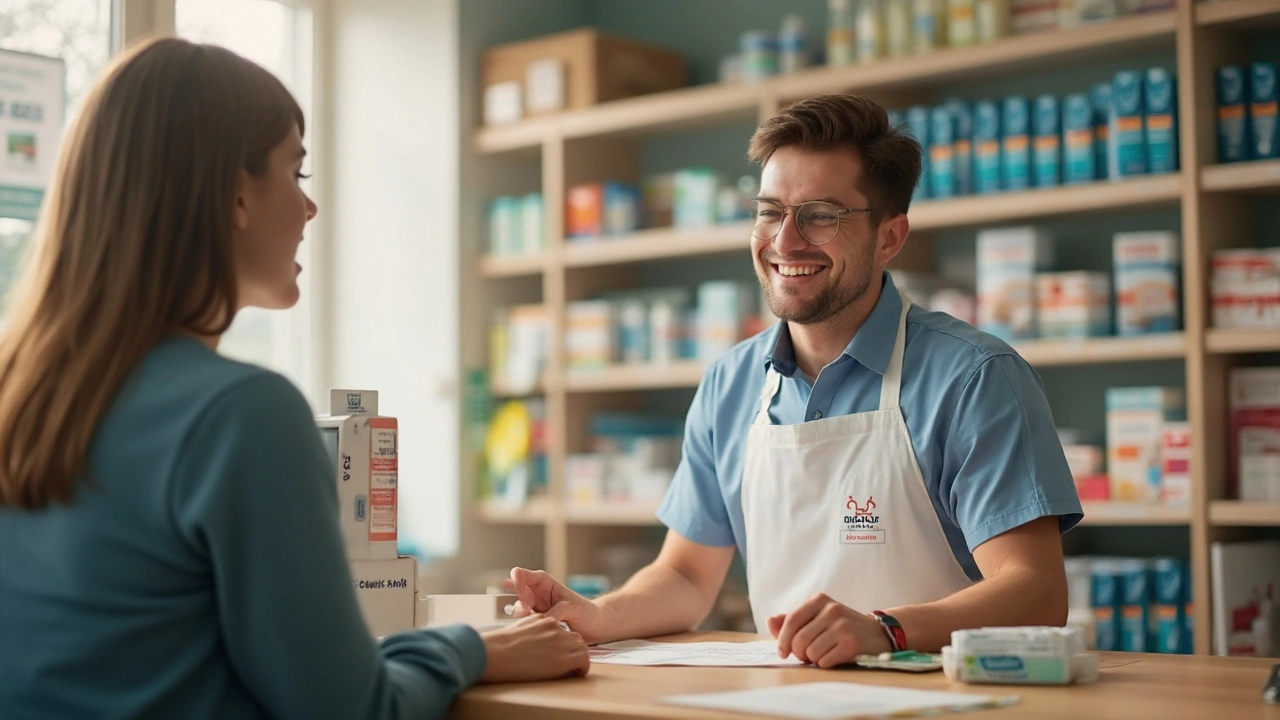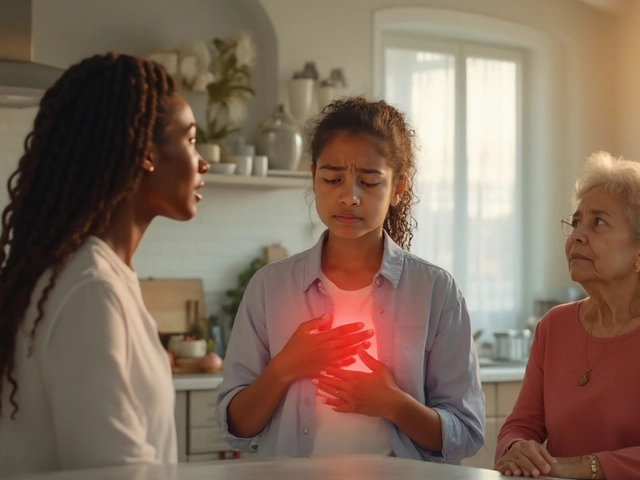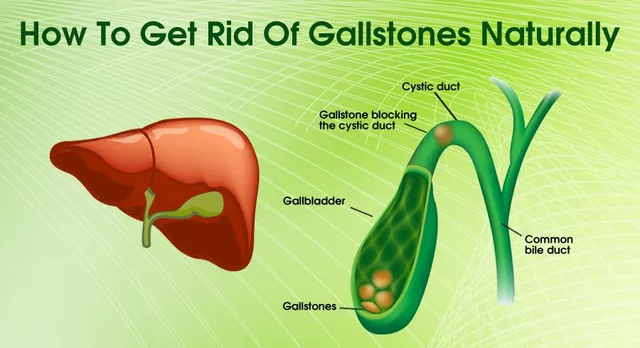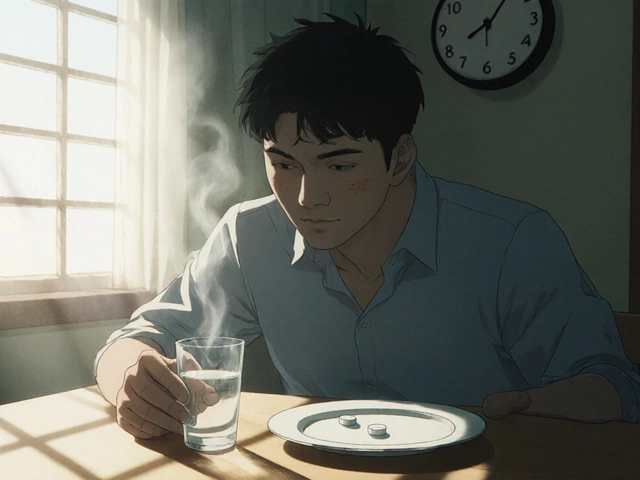The Real Reason Prices Vary So Much for the Same Prescription
Ever walked into two pharmacies on the same street and gotten two wildly different prices for the same pill? You're not imagining things: medication pricing is a secret maze. Pharmacies aren't just charging random rates, though—it all comes down to everything from their wholesale contract deals to how your insurance processes a claim. But here's the kicker: a pharmacist can tell you that a generic antibiotic, for example, might sell for $10 at one place and $50 across the road just because of rebate contracts, inventory stock at that location, or whether that store is part of a chain or independently run. Sometimes, a pharmacy even loses a bit of cash on a prescription, hoping you'll buy snacks or beauty products while you wait.
Every health plan negotiates its own rates. What nobody really tells you: these rates can change daily depending on the agreements between pharmacy benefit managers (PBMs), wholesalers, and the pharmacy itself. Think of PBMs as secret middlemen who set the rules for the cost, catching a chunk of savings that rarely trickle down to you. The only way to know the real price? Ask a pharmacist for the "cash price." That’s the price if you had no insurance or wanted to pay out-of-pocket. Want to go a step further? Some pharmacists will even compare a few discount card options on their own computer screens to see which rate ends up lowest for you, though your mileage may vary. Here’s a sneaky trick: if you hear about a big price drop at another chain, just say it. Many times, pharmacists have "price match" leeway—they’ll match or beat another pharmacy’s price if you just ask. No joke, that’s how a friend of mine knocked $80 off his asthma inhaler last month.
Patient demand affects sticker prices as well. If your doctor prescribed a hot new migraine drug, pharmacies may barely stock it, and the price stays sky-high. Older generics like amoxicillin? Sometimes, the retail cost plunges to rock bottom only because pharmacies can dust off old stock in the back. It’s worth remembering that the medicine you buy isn’t exempt from market games.
The Untapped Power of Pharmacy Discount Cards and How to Use Them
If you haven’t tried using a discount card app or website, you’re missing some crazy easy savings. No insurance needed. Here’s how it works from a pharmacist’s view: discount networks make deals directly with manufacturers and some PBMs, then pass a portion of that bulk-saving on to you. Think of sites like GoodRx or SingleCare—they show you cash prices, but the fine print? You can’t use them with your insurance. But there’s a twist most people never realize: you can ask your pharmacist to run BOTH scenarios—insurance AND card—and see which one rings up lower. At least in Texas, it’s perfectly legal. Sometimes, the discount card is a fraction of your regular copay.
Now don’t just stop at the first card you find. Prices can spike or drop every month as contracts change, so do yourself a favor: stack up a few cards and check them all before you refill. Tired of seeing “GoodRx” everywhere? It’s smart to check out other companies like GoodRx that quietly offer deals GoodRx doesn’t. SingleCare, RxSaver, and WellRx pop up with big discounts a lot more often than people realize. And if you spot a price lower online than what your pharmacy is quoting, show the pharmacist. In most cases, they’ll honor it, as long as the store is registered with that network.
A quick warning: always pay attention to the fine print, especially for limited-time offers and one-time discounts. And if a pharmacist switches you from one generic to another (say, different manufacturers), double-check that the price hasn’t changed. Even generic substitutions can shift costs by several dollars. By mixing and matching cards, checking monthly, and not being afraid to ask questions, you can save hundreds every year without breaking a sweat.

How Pharmacists Use Manufacturer Coupons and Patient Assistance Programs
Here’s what the TV ads don’t tell you: tons of costly brand-name drugs offer manufacturer coupons or even free programs if you meet the right criteria. Some pharmacists keep a folder of printed coupons behind the counter for regulars. Why? Well, these programs aren’t exactly obvious to people standing in line. Drug companies give them away to get you started on a medicine, so you’ll stick around once you’re tied to it for the long haul. If your pharmacist ever says, “Do you want to try a coupon?” always say yes—it rarely hurts, and sometimes those $0 copay deals are real, with no strings attached for the first few months.
For bigger savings, check if you qualify for patient assistance—these are serious programs aimed at people with little or no insurance. Most companies have websites set up, but the paperwork gets confusing quick. Most folks freeze up at this stage. Parent with a kid on an expensive asthma drug? Elderly person on diabetes medicine? There’s a good chance you’ll find a program if you ask the pharmacist for help applying. More chains have “insurance navigators” in-store or a phone call away, and they’ll fill out the long forms for you for free. Pro tip: if you’re on Medicare and you hit the "donut hole," you might still get help through manufacturer programs—most companies don’t turn away Medicare patients outright but make it tricky to apply. Don’t just give up if your first try gets denied.
A little-known trick: even if you’re not sure you’re eligible, apply anyway. Many times, just fudging your income by a couple dollars (as long as you’re close) gets you accepted, and the companies rarely check unless you’re applying for high-dollar chemo meds. The worst they can say is no. For popular brands (think insulin or new heart meds), these programs can mean $5,000 or more in saved costs per year.
Strategies Pharmacists Use to Work Around High Deductibles
Ever hit the pharmacy and your insurance says: “Sorry, that’ll be $400 until you meet your deductible?” You’re definitely not alone. Pharmacists have learned some creative ways to help folks who fall in this dreaded insurance gap. For starters, some drugs have multiple price tiers—like a regular-release vs extended-release tablet. Switching even one word in a prescription can mean the price plunges from $120 to $30. Sometimes, it’s as easy as asking your doctor or pharmacist: “Is there a cheaper version that works the same?”
Bulk buying is another smart move. Some pharmacies let you grab a three-month supply at a time for barely more than a single fill. Independents tend to be more flexible than mega-chains here, but even a big-box pharmacy can do this with a bit of charm. Another trick is asking your pharmacist if they offer loyalty clubs—some pharmacies run in-store saving programs most people never see advertised. Think of these as like a “frequent flyer” card for your medicine. It can save a solid 10-15% per script. And don’t overlook mail-order options for chronic meds. Pharmacies that specialize in mail service are famous for their low overhead, and sometimes they bundle discounts if you talk to a real person on the phone. Saved one guy I know over $300 a year just by moving his blood pressure pills off the in-store shelf.
A tip especially for families: if you get the same prescription every month, ask your pharmacy if they have an auto-refill discount—chains like CVS and Kroger sometimes slash a few bucks off every refill quietly if you sign up. You’d be surprised how quickly that adds up.

Behind-the-Counter Deals and Questions Most People Never Think to Ask
Last section, but maybe the most fun: the stuff you’ll never see advertised but works just because you asked. For example, expired coupons or ongoing sale prices—pharmacists can sometimes still apply them if you’re polite. If a drug just went generic in the last year, the price tends to drop every couple months—so always ask if there’s a “new generic available.” Sometimes, the staff will keep you in the loop for the next drop if you leave a note and a phone number. Your pharmacy might also get stuck with short-dated stock (meds about to expire in a few months), which they’ll unload for a fraction of retail price—just ask if they have any on hand for your prescription. They can’t advertise this, but if you’re on good terms with the people behind the counter, these deals happen more than you think.
A lesser-known hack: in states like Texas, pharmacists aren’t legally required to stick to the insurance plan’s network for cash sales. If you find a better deal, say, at an independent pharmacy across town, you can fill the exact same script there. Chains tend to compete hardest for cash customers. Ask a local pharmacist if they'd be willing to order the medicine in bulk for your family and offer a “case discount”—this kind of deal can work especially well for stuff like inhalers, cholesterol meds, or epinephrine pens that you fill consistently.
Another tip: if you speak Spanish or another language, some pharmacies have exclusive discount programs for certain communities that aren’t always listed online. Get to know the staff. They’re more likely to tip you off about hidden savings if you make a real connection.






Belle Koschier
26 April 2025 - 22:27 PM
I appreciate how you broke down the whole pricing maze; it really shines a light on why the same script can cost so differently.
Seeing the cash price option explained makes me feel more empowered next time I’m at the counter.
It's also good to know that a polite ask about price‑matching can actually work.
Overall, this is solid, practical advice for anyone looking to stretch their prescription budget.
Allison Song
30 April 2025 - 23:40 PM
When you consider the philosophical angle, the pharmacy ecosystem mirrors a market with hidden negotiations.
The idea that PBMs act as invisible gatekeepers challenges our trust in the system.
It reminds me of the broader question: how many layers of cost are we truly aware of?
Understanding that transparency is often a luxury helps us navigate more wisely.
Thank you for articulating these complexities so clearly.
Joseph Bowman
5 May 2025 - 00:54 AM
Honestly, the whole PBM thing feels like a shadowy cabal pulling strings behind the pharmacy curtain.
They claim to negotiate lower prices, but the rebates often end up as hidden profits for the big pharma elites.
That’s why I always ask the pharmacist to run the cash price side‑by‑side with my insurance – you never know which one they’re really feeding.
Singh Bhinder
9 May 2025 - 02:07 AM
It's fascinating how many discount cards you can stack, and many people overlook that completely.
Switching between GoodRx, SingleCare, and even the newer regional apps can shave off a surprising chunk.
Also, the tip about asking the pharmacist to apply an expired coupon if they're feeling generous is pure gold.
Keep the hacks coming; they really make a difference for everyday folks.
Kelly Diglio
13 May 2025 - 03:20 AM
Your empathy shines through, especially when you mention patients who struggle with high deductibles.
Highlighting the bulk‑buy option and auto‑refill discounts can be a lifesaver for families on a budget.
The reminder to verify generic substitutions for price changes is spot on – I’ve seen that catch people off guard before.
Overall, the tone is supportive and the information is both accurate and actionable.
Thanks for delivering such thoughtful guidance.
Carmelita Smith
17 May 2025 - 04:34 AM
Great tips, thanks! :)
Liam Davis
21 May 2025 - 05:47 AM
One of the most effective strategies I’ve employed is to request the pharmacist to run both the insurance claim and the cash price through a discount card simultaneously, then compare the totals before deciding which to proceed with.
This practice often uncovers a hidden savings of 15–20 percent, especially on brand‑name medications where the rebate structures differ significantly.
Another tip is to inquire about the pharmacy’s loyalty or membership programs; many chains have unadvertised tiers that grant an automatic discount after a certain number of fills.
When dealing with high‑deductible health plans, consider asking the prescriber if a therapeutically equivalent lower‑cost alternative exists – sometimes a slight formulation change can drop the price dramatically.
For chronic prescriptions, ask the pharmacy if they can provide a three‑month supply at a discounted rate; independent pharmacies are often more flexible, and the per‑pill cost can be reduced substantially.
Don’t forget to check if your state offers any specific drug assistance programs; a quick search on the health department’s website can reveal eligibility for free or reduced‑cost medication for low‑income residents.
Finally, always keep a note of the ‘cash price’ printed on the receipt and compare it with the price shown in discount apps; pharmacies are required to honor the lower price if it’s a legitimate competitor’s offer.
These steps, when combined, can save a family upwards of several hundred dollars a year without compromising on treatment efficacy.
Arlene January
25 May 2025 - 07:00 AM
Love the energy in this post! It’s rare to see such clear, actionable advice that actually works in real life.
If you’re feeling stuck, just remember that a friendly ask can open doors – pharmacists are more helpful than most think.
Keep pushing for those price‑match checks, and don’t be shy about stacking discount cards.
Stay motivated, and you’ll keep those prescription costs down.
Kaitlyn Duran
29 May 2025 - 08:14 AM
This breakdown really opened my eyes to how many hidden levers there are in pharmacy pricing.
I’m definitely going to start asking about cash prices and trying a few discount apps next time I refill.
Thanks for making the process seem less intimidating.
Terri DeLuca-MacMahon
2 June 2025 - 09:27 AM
Wow, such a treasure trove of hacks! 🌟
It’s amazing how something as simple as asking for a price match can shave off $80 on an inhaler – that’s a real game‑changer! 💪
Don’t forget to keep an eye on the expiration dates of coupons; sometimes a few days left means a huge discount. ⏰
Also, sharing this info with friends and family spreads the savings around – community power! 🤝
Keep the tips coming, we’re all in this together! 🚀
gary kennemer
6 June 2025 - 10:40 AM
From a practical standpoint, the suggestion to ask the pharmacist to run both insurance and a discount card side‑by‑side is a solid, evidence‑based approach.
It aligns with studies showing that consumers who compare multiple price points tend to achieve lower out‑of‑pocket costs.
Additionally, the reminder about bulk purchasing for chronic meds mirrors pharmacy best practices for stock management and cost reduction.
Overall, these recommendations are both feasible and grounded in real‑world pharmacy operations.
I’d add that documenting your price checks can help you track savings over time and negotiate further discounts.
Payton Haynes
10 June 2025 - 11:54 AM
They’re hiding fees on purpose, you know. The whole PBM thing is just a front to keep us paying more.
Earlene Kalman
14 June 2025 - 13:07 PM
This post is just a rehash of obvious advice.
Brian Skehan
18 June 2025 - 14:20 PM
Looks like another fluff piece to me.
Andrew J. Zak
22 June 2025 - 15:34 PM
Sharing knowledge like this strengthens the community.
Keep supporting each other and the savings will keep growing.